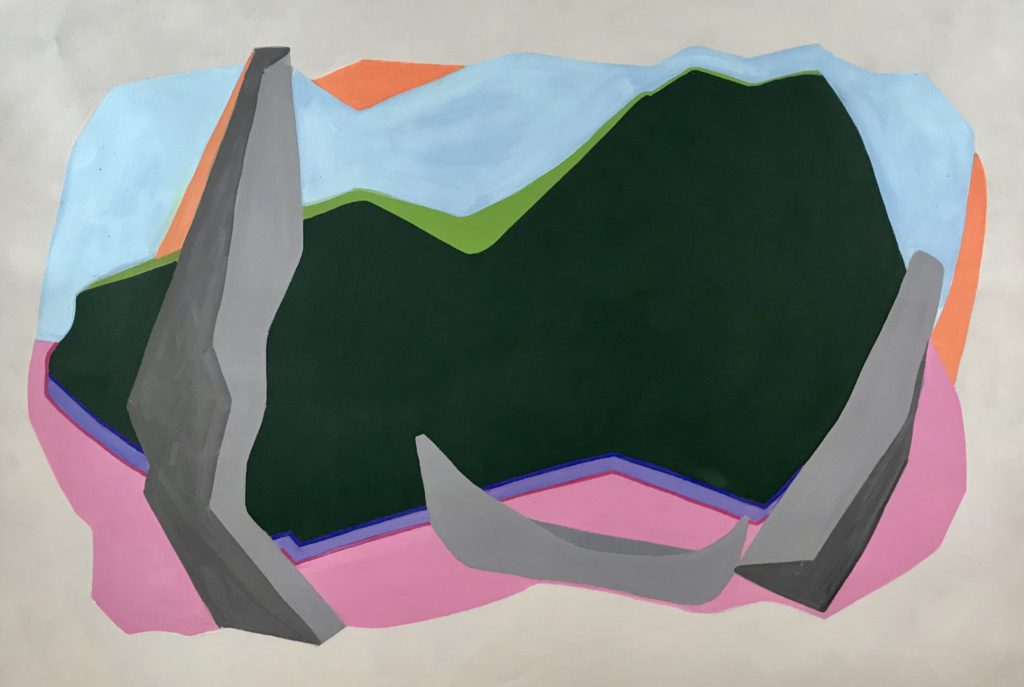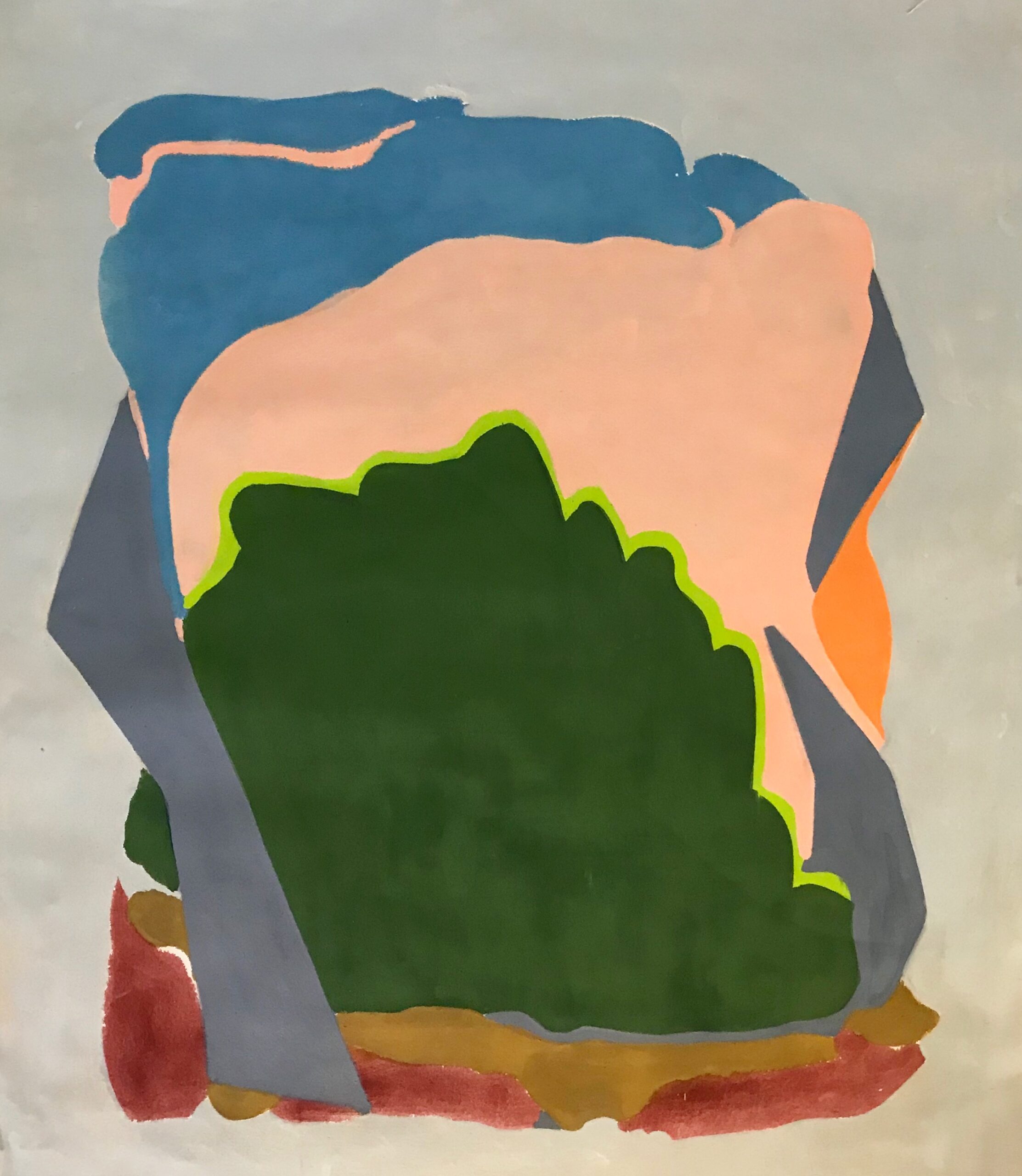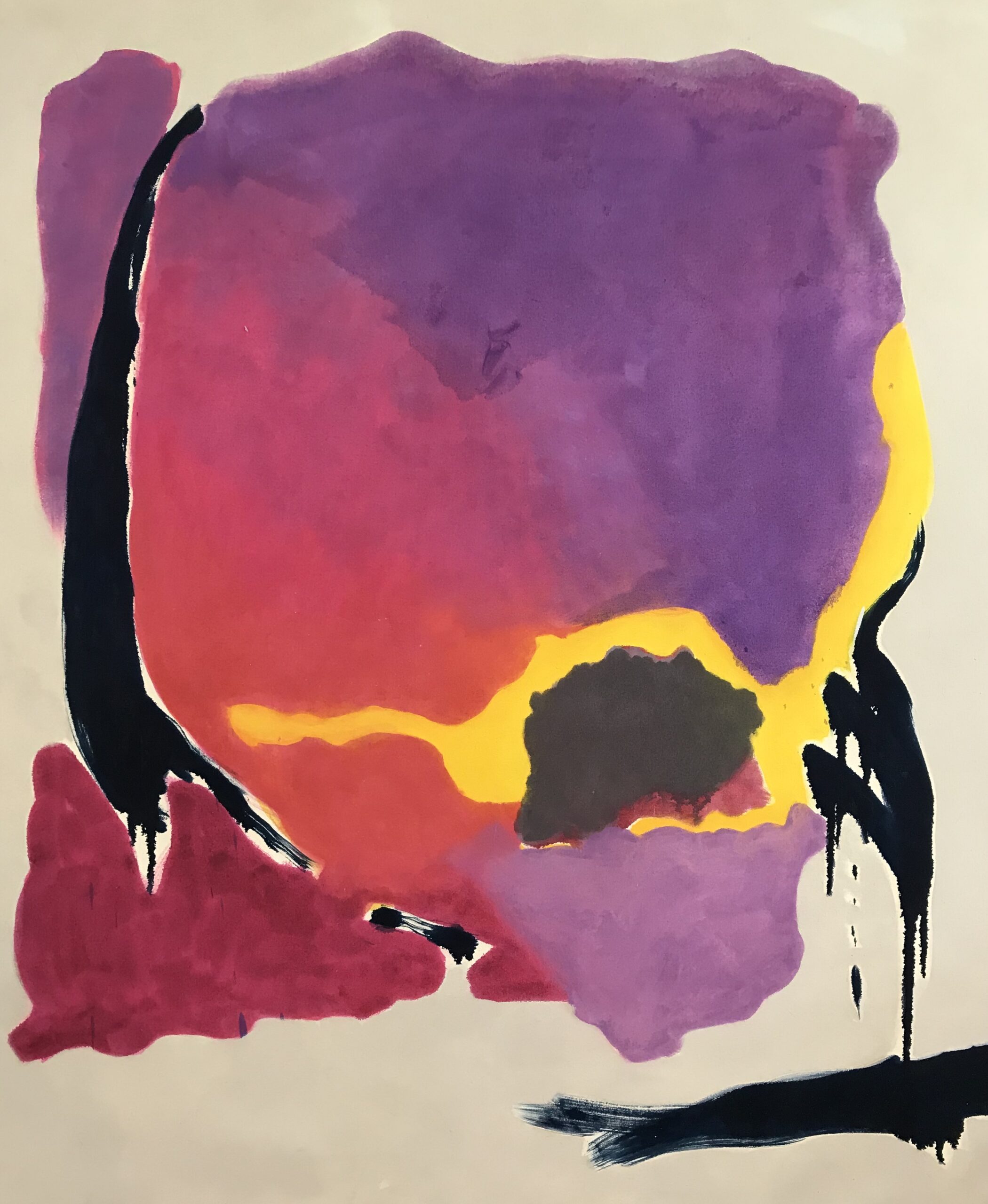
Born and raised in the countryside near Cambridge, England, Katharine Dufault was surrounded by natural beauty from a young age. Her mother—an artist herself before becoming a stay-at-home parent—always encouraged her children to paint. Now, Dufault lives in Westchester, New York, and finds herself inspired by her current surroundings and her memories of England, all of which inform her imagined landscapes.
“The landscape is something that I’ve always gravitated toward. I grew up surrounded by it—watching it, observing it, among it—so it’s always been my default subject. However, my interest in depicting the landscape is to abstract it. I don’t want to sit and copy the land exactly as it appears. I’ve always been striving for an abstraction where I can grasp the key elements—whether that’s the light or the configuration of rocks—just to try and get the essence of what I’m seeing. As much as I like en-plein-air painting, I often like to recall landscapes that I’ve previously seen. In my studio, I’ll remember a landscape that really moved me, and I’ll paint from memory. The painting process takes you where it wants to take you. You don’t have complete control—the muse takes over. There’s a part of abstraction that moves into its own realm.
With my Forest paintings, I’m trying a new vocabulary. They’re more geometric, slightly Cubist, and coming away from the edges. I was focusing on the space in the middle instead of having it go on infinitely in either direction. The series came purely from my own imagination. I was reading My Struggle by Karl Ove Knausgaard. He grew up in Norway, and he’s always talking about visualization: he sees the forest, he sees the fjords, he sees the sky. He’s the first writer I’ve read who’s really focused on the landscape. Growing up in Cambridge, I realized that that was very much my reality: I would cycle through these fields and took for granted that everyone is always absorbing the landscape around them. And then I further realized that I hadn’t read many authors who were intensely bringing back this landscape, which is actually informing their own personhood. I was interested in making discrete forests, almost islands to themselves. The colors of the forests are similar to what I’ve seen in nature—I’m a colorist, so I love to put colors in to make the landscape sing and dance by playing with bright color. And the way I paint is ambiguous. Are we seeing a mountain range or trees in the distance? But it doesn’t really matter. Viewers can bring to it what they want.”



